Pantherophis alleghaniensis
—
Eastern Ratsnake
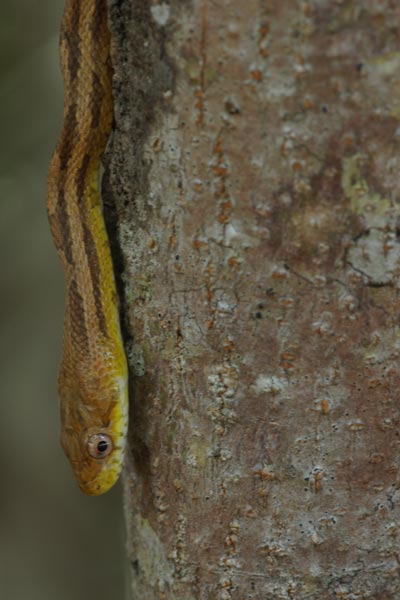
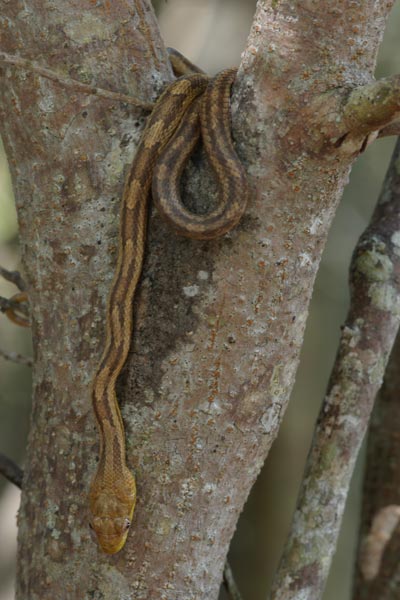
This young snake was draped in the fork of a small tree, completely motionless. At first I thought it might be ill or even dead, but it eventually moved its head enough to convince me that any rumors of its demise were greatly premature.
This species was split from Elaphe obsoleta in 2001, and many references still use the older name. The population in the Upper Keys (like Key Largo) were sometimes considered a unique subspecies or at least variety, E. obsolete deckerti.
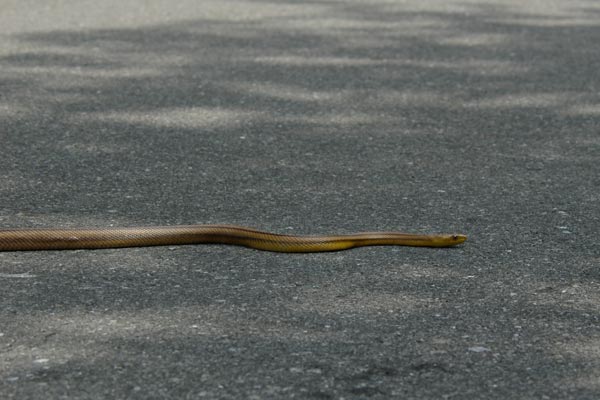
This lovely ratsnake was slithering across the main park road in front of our car. I got one or two "road pictures", but then had to encourage it off the road for its own safety as other cars were approaching. As soon as it got off the pavement it suddenly tripled in speed and vanished instantly into the bushes.
This coloration of ratsnake was classified as the Yellow Ratsnake, Elaphe obsoleta quadrivittata, before the recent big ratsnake reclassification.
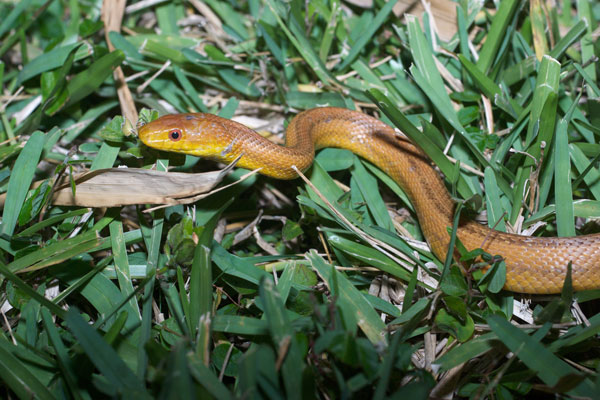
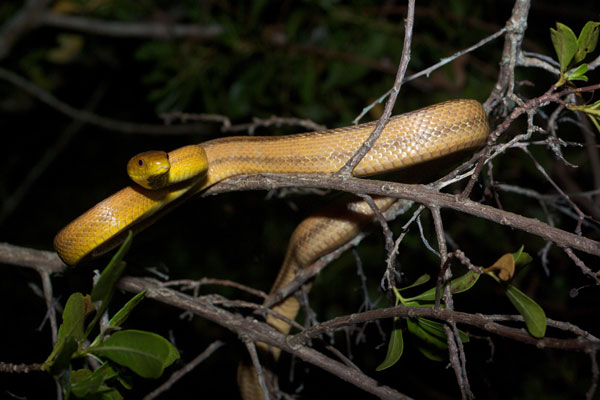
In my mother-in-law's yard in southern Florida, I've seen ring-necked snakes, blind snakes, racers, green anoles, brown anoles, bark anoles, knight anoles, southern toads, cane toads, greenhouse frogs, iguanas, and even a crocodile. But this was the first rat snake I've seen in the yard. It was discovered in the grass by our dog Spreckles who was out for his evening constitutional (I later put it in the branches of a tree). You should be unsurprised to learn that Spreckles is part rat terrier.
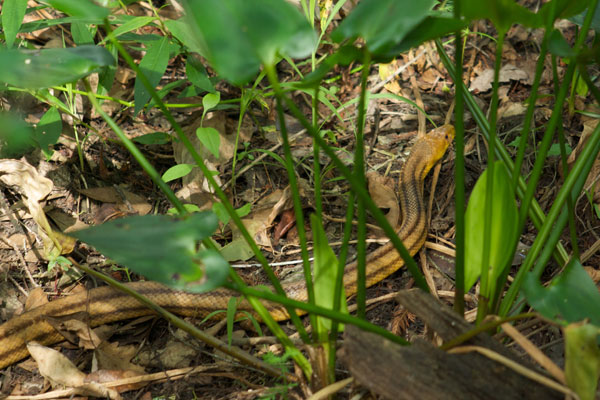
I had previously visited the wonderful Corkscrew Swamp sanctuary a few years earlier at almost exactly the same time of year. At that time I saw a number of water-loving snakes, and looked forward to another snakey day. Unfortunately, the intervening years of drought in south Florida hit Corkscrew Swamp hard, and most swampy areas from 2004 were dry as a bone in 2008. I saw no water-loving snakes at all, and saw only one snake of any kind all morning. At least the snake was this large, beautiful one (though it did not stop moving and pose for a photo session).
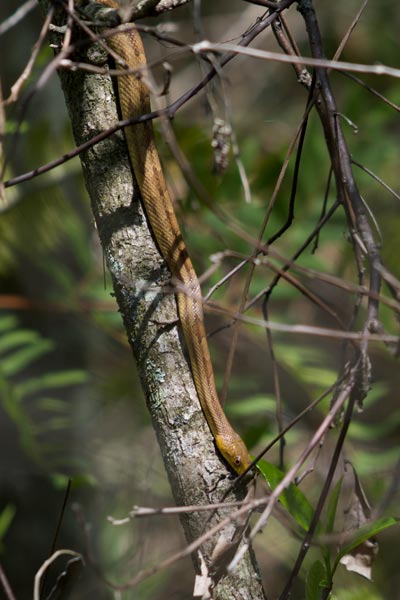
Two years later, almost to the day, I found myself back at Corkscrew Swamp. This time there had been no drought; the water levels were impressively high. But yet again I saw only one snake, this young one that was impressively descending a nearly vertical branch.
Printed references:
- Behler, J. L., King, F. W. 1979. The Audubon Society Field Guide to North American Reptiles & Amphibians
- Conant, R., Collins, J. T. 1998. Peterson Field Guide to Reptiles and Amphibians of Eastern and Central North America, Third Edition, expanded
- Crother, B. I. (ed.) 2017. Scientific and Standard English Names of Amphibians and Reptiles of North America North of Mexico, with Comments Regarding Confidence in Our Understanding, Eighth Edition
- Tennant, A. 1997. A Field Guide to Snakes of Florida